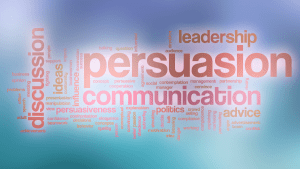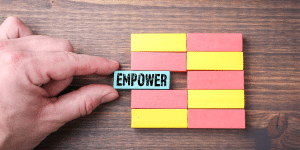Non-verbal communication is an essential aspect of our everyday interactions. It encompasses all the ways we communicate without using words. Body language, facial expressions, gestures, eye contact, posture, and touch all play a significant role in how we convey our feelings and intentions. Understanding the importance of non-verbal cues can help us better communicate with others and build stronger relationships. In this article, we’ll explore the different types of non-verbal communication, their meanings, and how we can use them to our advantage in various situations. So, let’s dive in and explore the fascinating world of non-verbal communication!
Body Language: The Importance of Non-Verbal Communication

Have you ever heard the saying, “Actions speak louder than words?” This is especially true when it comes to non-verbal communication, or body language. The way we stand, gesture, and even the expression on our face can convey more than what we say out loud. Body language can communicate a variety of messages, such as confidence, nervousness, boredom, or even aggression. For example, if someone is standing with their arms crossed and a frown on their face, it could indicate that they are unhappy or defensive. On the other hand, if someone is standing tall with their shoulders back and a smile on their face, it could indicate that they are confident and approachable. It’s important to pay attention to our own body language as well as the body language of others. By being aware of our own non-verbal cues, we can ensure that we are sending the message we intend to send. By observing the body language of others, we can better understand their thoughts and feelings, even if they are not explicitly stated.

In addition to sending and receiving messages, body language can also help to establish trust and build rapport. For example, mirroring someone’s body language (such as matching their posture or gestures) can help to create a sense of connection and understanding. So, the next time you’re in a conversation or meeting, pay attention to the non-verbal cues. Is the speaker maintaining eye contact? Are they fidgeting or slouching? By taking note of these cues, you can better understand the message being conveyed and respond appropriately. Remember, sometimes the most important part of communication is what’s not being said.
Facial Expressions

Facial expressions are an essential part of non-verbal communication. They are the involuntary movements of the facial muscles that convey emotions, feelings, and attitudes. Our faces can express a wide range of emotions, including happiness, sadness, anger, fear, surprise, and disgust. Moreover, facial expressions can also indicate the intensity and duration of an emotion.

For instance, a big smile can indicate extreme happiness or joy, whereas a slight frown can indicate a minor disappointment. Facial expressions can also be used to mask emotions, which can sometimes lead to misinterpretation or misunderstanding. For example, a person might smile to hide their sadness or anger, making it difficult for others to understand their true feelings.

The eyebrows, eyes, and mouth are the primary facial features that convey emotions. The position, movement, and shape of these features can significantly impact the emotions we convey. For example, raised eyebrows can indicate surprise or disbelief, whereas a furrowed brow can indicate confusion or anger. Similarly, wide-open eyes can indicate fear or excitement, whereas squinted eyes can indicate suspicion or skepticism. Finally, a closed mouth can indicate neutrality or boredom, whereas an open mouth can indicate surprise or shock.

In conclusion, facial expressions are an integral part of non-verbal communication. They convey emotions, feelings, and attitudes, and can significantly impact the way we interact with others. Understanding and interpreting facial expressions can help us build better relationships and avoid misunderstandings.
Gestures
Gestures are a crucial part of non-verbal communication. They can convey emotions, attitudes, and even values. Gestures can be conscious or unconscious, and they can vary from culture to culture. Understanding the meaning behind gestures is essential to communicate effectively.

Handshakes are a common gesture used in many cultures to greet and show respect. A firm handshake can convey confidence and respect, while a weak handshake can show insecurity. It is essential to match the strength of the handshake with the person you are greeting.
Crossing your arms can convey different meanings depending on the context. It can show defensiveness or indicate that you are closed off to the conversation. However, it can also be a comfortable position that people take without realizing it. It is essential to pay attention to other non-verbal cues to interpret the meaning accurately.

Nodding your head is a gesture that shows agreement or understanding. It can also be a way of encouraging the speaker to continue. However, nodding too much can indicate that you are not really listening and just trying to appease the speaker. It is crucial to use nodding appropriately to show engagement and interest.

A thumbs-up gesture is a positive sign that shows agreement, encouragement, or approval. However, it is essential to be aware of cultural differences. In some countries, a thumbs-up can mean something entirely different and might offend people.
Hugging is a physical gesture that shows affection, comfort, and support. It can also be a way of celebrating and expressing joy. However, it is essential to be aware of personal boundaries and cultural norms. Not everyone is comfortable with hugging, and some cultures might not consider it appropriate.In conclusion, gestures are an essential part of non-verbal communication. They can convey a lot of information and emotions that words cannot express. Understanding the meaning behind gestures is crucial to communicate effectively and avoid misunderstandings.
Eye Contact and Non-Verbal Communication

Eye contact is a crucial aspect of non-verbal communication. It is a powerful tool that can convey a wide range of emotions and meanings. Making direct eye contact shows that you are engaged and interested in the conversation, while avoiding eye contact can give the impression that you are disinterested or even dishonest. Have you ever noticed how much more comfortable you feel when someone maintains eye contact with you during a conversation? This is because eye contact creates a connection between people. It can convey empathy, trustworthiness, and confidence. However, it’s important to note that eye contact can also be culturally specific. In some cultures, direct eye contact is seen as a sign of disrespect or aggression. Be mindful of cultural differences and adjust your eye contact accordingly. In addition, too much eye contact can be uncomfortable or even intimidating. It’s important to find a balance and avoid staring. Remember that eye contact is just one aspect of non-verbal communication, and it should be used in conjunction with other non-verbal cues such as facial expressions and body language. In conclusion, eye contact plays a crucial role in non-verbal communication. It can convey emotions, build connections, and establish trust. By mastering the art of eye contact, you can improve your communication skills and build stronger relationships with others.
Improving Your Posture for Better Non-Verbal Communication

Do you ever find yourself slouching or hunching over at your desk? Poor posture not only affects your physical health, but it can also have a negative impact on your non-verbal communication. Your posture conveys confidence and assertiveness, and can even affect how others perceive your level of authority and competence. To improve your posture, start by being mindful of your body position throughout the day. When sitting, keep your back straight and your shoulders relaxed. Your feet should be flat on the ground and your knees at a 90-degree angle. Avoid crossing your legs or ankles, as this can cause strain on your back and neck. When standing, distribute your weight evenly on both feet and keep your shoulders pulled back. Imagine a string attached to the top of your head, pulling you up towards the ceiling. This will help you maintain a tall and confident posture. Another way to improve your posture is through exercise. Strengthening your core and back muscles can help you maintain good posture throughout the day. Try incorporating exercises such as planks, bridges, and rows into your workout routine. Remember, good posture not only benefits your physical health, but it also conveys confidence and authority in your non-verbal communication. By being mindful of your body position and incorporating exercise into your routine, you can improve your posture and communicate more effectively.
The Power of Touch in Non-Verbal Communication
When we think of non-verbal communication, we often focus on facial expressions and body language. However, touch can be just as powerful, if not more so. Our sense of touch is closely linked to our emotions and can convey a wide range of feelings, from comfort and support to anger and aggression. Think about it: a simple pat on the back can indicate support and encouragement, while a firm handshake can convey confidence and authority. On the other hand, a shove or a slap can signal aggression or anger. Touch can also be used to convey intimacy and affection. A hug, a kiss on the cheek, or holding hands can all signify closeness and love. In fact, studies have shown that physical touch can release endorphins, which are the body’s natural feel-good chemicals. However, it’s important to note that touch can also be misinterpreted or unwelcome. It’s crucial to be aware of cultural and personal boundaries when it comes to touch. What may be acceptable in one culture or relationship may not be in another. In conclusion, touch can be a powerful tool in non-verbal communication. It can convey a wide range of emotions and can be used to show support, confidence, and affection. However, it’s important to be aware of cultural and personal boundaries and to always respect the wishes of others when it comes to touch.
The Importance of Eye Contact in Non-Verbal Communication
Have you ever heard the saying, “the eyes are the windows to the soul”? Well, when it comes to non-verbal communication, this saying couldn’t be more true. Eye contact is a crucial component of effective communication, and it can convey a plethora of emotions and attitudes without saying a word.
Think about it: when you meet someone for the first time, what’s the first thing you do? You make eye contact. This simple act can set the tone for the entire conversation. If you avoid eye contact, it can give the impression that you’re disinterested or uncomfortable. On the other hand, if you maintain eye contact, it shows that you’re engaged and interested in what the other person has to say.
Eye contact can also convey confidence and authority. When you speak with someone while maintaining eye contact, it shows that you’re confident in what you’re saying and that you believe in your message. This can be especially important in professional settings, such as job interviews or business meetings.
On the other hand, avoiding eye contact can convey nervousness or uncertainty. It can make you appear less confident in yourself and your message. This can be a disadvantage in many situations, especially when you’re trying to make a good impression.

In conclusion, eye contact is an essential aspect of non-verbal communication. It can convey a wide range of emotions and attitudes and can set the tone for an entire conversation. Whether you’re trying to make a good impression, convey confidence, or simply connect with someone on a deeper level, maintaining eye contact is a powerful tool that should not be overlooked.
Conclusion
In conclusion, non-verbal communication plays a crucial role in our daily interactions with others. Our body language, facial expressions, gestures, eye contact, posture, and touch can convey a wealth of information about how we feel, what we think, and what we want. Being aware of our non-verbal cues and understanding those of others can help us communicate more effectively and build stronger relationships. By paying attention to non-verbal cues, we can gain insight into others’ emotions, attitudes, and intentions, which can help us respond appropriately and avoid misunderstandings. Remember, communication is not just about what we say, but also how we say it. So, let’s strive to use non-verbal communication to our advantage, and become better communicators in the process.











